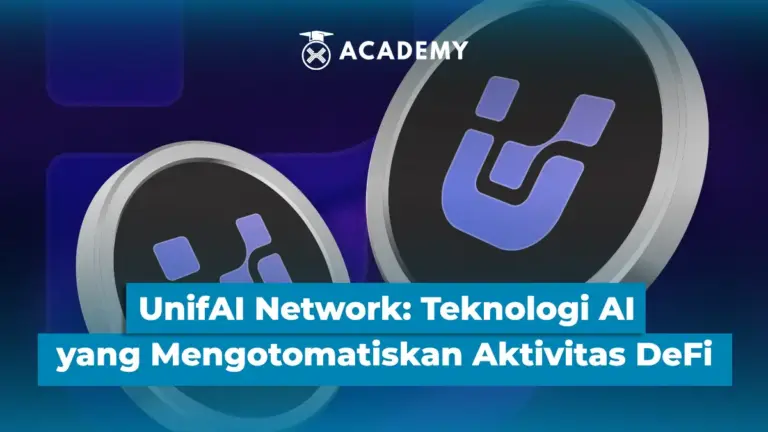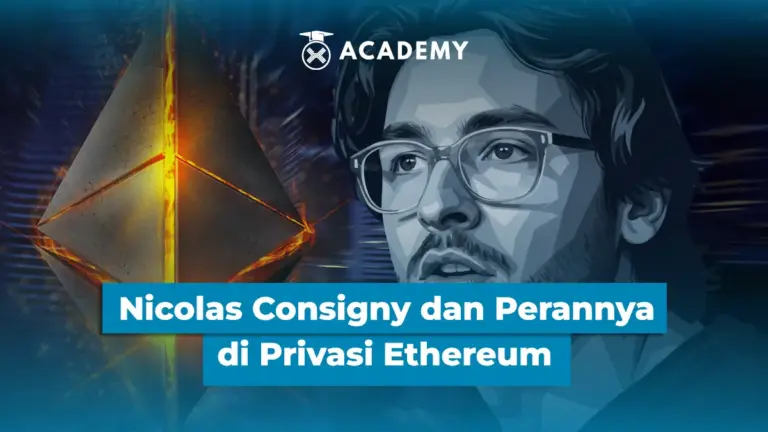As the Layer 2 blockchain ecosystem rapidly evolves, issues around the governance of the protocol are becoming a growing concern.
Many users play a passive role, incentives to participate are limited, and key decisions are often dominated by a handful of large token holders.
This has led to the emergence of new approaches such as Panoramic Governance, which offers broader participation, more attractive incentives, and support for sustainable protocol growth.
So, what exactly is Panoramic Governance? And how can this concept be a new direction in Web3 governance? Let’s take a deeper dive!
What is Panoramic Governance?

Panoramic Governance is a new governance model designed to increase community participation while encouraging protocol growth in the Layer 2 blockchain ecosystem.
This mechanism was first developed by the ABS Network team in response to the low level of user involvement in decision-making across protocols.
Different from traditional governance models, Panoramic Governance combines a reward system, reputation, and user contribution history.
The goal is to create a value-aligned ecosystem where all parties, including users, protocols, and network operators, receive appropriate incentives for their roles.
This concept works through two main interconnected systems. One of them, users who are active in voting will get a share of the sequencer fee.
This fee comes from the gas fee paid by other users to speed up the transaction sequence and get earlier confirmations.
The next concept is that these governance participants also have the right to determine the distribution of token emissions to protocols operating on the network.
With this approach, protocols that are able to increase demand for block space will help increase sequencer revenue.
This then has a positive impact on active voters because the greater the sequencer’s income, the greater the incentives they receive.
This cycle creates positive and mutually beneficial incentives, which ultimately strengthen community growth and the sustainability of the ecosystem as a whole.
Current Protocol Governance Issues
Currently, many blockchain protocols, especially in the Layer 2 ecosystem, still face serious challenges in terms of governance. One of the main problems is the dominance of voting by large token holders or whales.
Since voting power is determined by the number of tokens held, important decisions are often in the hands of a few parties, while the majority of the community does not have significant influence in the decision-making process.
On the other hand, the lack of incentives to get involved makes many community members choose to be passive. They do not feel any direct benefit from participating in discussions or voting, so participation is very low.
As a result, many strategic proposals that actually have great potential to bring positive change, fail to be passed simply because of a lack of votes, not because of the lack of value or quality of the idea.
Furthermore, many governance systems that exist today only operate as formalities. There is no strong mechanism to ensure accountability or follow up on the results of decisions in real terms.
As for governance, it becomes a purely symbolic process with no direct impact on the direction and development of the protocol.
Therefore, communities in various Layer 2s such as Arbitrum, Optimism, and zkSync are beginning to realize the need for a more open, fair governance mechanism that encourages active participation from all stakeholders.
Also read related articles: How to Easily Create an Arbitrum Wallet & Its Advantages
How Does Panoramic Governance Work?
Please note, Panoramic Governance comes with a different approach from traditional governance systems.
In this mechanism, voting power is not only determined by how many tokens are owned, but also considers the active contribution of users to the ecosystem.
This means that real participation such as voting, staking, and supporting protocol development will determine how much influence someone has in decision-making.
Interestingly, rewards in this system are given not automatically, but based on the real impact of the approved proposal.
If a proposal is proven to bring positive results, such as increasing Total Value Locked (TVL), transaction volume, or adoption growth, then the proposer and his supporters will receive incentives.
Basically, it encourages the quality of ideas and more mature considerations in the voting process.
To maintain credibility, Panoramic Governance also uses a reputation system built from the history of governance activity, staking, and other historical contributions.
The data is combined with on-chain metrics to calculate each user’s voting rights more fairly and transparently.
In addition, active voters are also rewarded, making participation in governance not only meaningful but also profitable. That way, community involvement can grow more massively and sustainably.
You might also be interested in this: How to Read On-Chain Data & Crypto Price Predictions
Advantages Compared to Traditional Governance Systems
When compared to traditional governance that is commonly used today, Panoramic Governance brings a number of advantages that make it fairer and more effective, including the following:
1. Traditional DAO Governance
1.Voice is only determined by the number of tokens
In traditional systems, the more tokens you have, the more votes you have. This often makes decisions controlled by a handful of large token owners so that the voices of small communities become less meaningful.
1.Low community participation
Because of the small voice and minimal incentives, many community members are less motivated to actively vote or contribute to protocol governance.
1.Limited or no rewards
Most legacy systems do not provide rewards for those who actively participate so that the sense of involvement and motivation to contribute decreases.
2. Panoramic Governance
1.Voting based on tokens and contributions
This system not only looks at the number of tokens, but also how actively users contribute, for example by voting, staking, or being involved in development. In this way, the voice becomes more representative and fair.
1.Rewards for voters and proposers
Both voters and proposers of positive proposals will receive incentives. This makes the governance process more lively because everyone involved feels valued.
1.Encouraging constructive proposals
Because incentives are based on tangible outcomes, such as increased transactions or adoption, users are more motivated to propose and support ideas that truly improve the protocol.
Why is it Suitable for Layer 2?
Layer 2 ecosystems such as Optimism, Arbitrum, and Base are indeed growing very rapidly, but this also brings its own challenges, especially in the governance of their protocols.
Often, existing governance systems are unable to keep up with the speed of innovation and changing community dynamics. As a result, governance can become stagnant, less responsive, and less than optimal in encouraging sustainable growth.
Panoramic Governance is here as the right solution to these challenges. Its flexible and adaptive mechanisms encourage the community to not just be spectators.
This system invites them to be actively involved in decision-making and running the protocol.
Through a combination of incentives and recognition of contributions, users are increasingly motivated to vote, propose ideas, and support steps that have a positive impact.
This model is perfect for a variety of Layer 2 projects, including DAOs, DeFi protocols, rollups, even NFT projects and blockchain games that require fast, inclusive, and long-term growth-oriented governance.
In this way, Panoramic Governance helps ensure that governance is not just a formality, but truly becomes the main driver of innovation and development of the Layer 2 ecosystem.
Implementation Examples & Adoption Potential
Panoramic Governance has begun to be tested in the ABS Network ecosystem, primarily in the development of tokenomics proposals that are based on real impacts on-chain.
This system rewards users who actively propose and approve features that have proven to improve protocol performance, such as increased transactions or liquidity growth.
With an approach that focuses on real results and clear incentives, Panoramic Governance has great potential to be adopted by various DAO projects and Ethereum-based Layer 2 protocols.
This model is very relevant to the current governance trend that emphasizes governance with real incentives and focuses on positive-impact proposals. That way, the community feels appreciated and is increasingly motivated to actively contribute.
Another interesting article for you: Governance Token 2025: Functions, Profits & Risks!
Challenges & Risks of Implementation

Implementing Panoramic Governance is not as easy as a regular token voting system because the mechanism is more complex.
The community needs to be adequately educated to understand how the reward system works, which involves many aspects such as contribution, reputation, and on-chain data.
In addition, there is a potential risk of contribution manipulation if the metrics used to measure user activity and impact are not strictly validated.
Therefore, it is very important to have a transparent and auditable verification system so that user reputation truly reflects their real contributions.
Another challenge is that this model is still relatively new and not many large protocols have fully adopted it, so it takes time and proof of success for more projects to dare to implement this system.
Conclusion
So, that was an interesting discussion about Panoramic Governance: A New Layer 2 Blockchain Governance Mechanism that you can read in full at the Crypto Academy at INDODAX Academy.
In conclusion, Panoramic Governance is not just a cool term in the Web3 world, but a real breakthrough that revives the spirit of true decentralization, by providing space, voice, and rewards for the community.
In addition to expanding your investment horizons, you can also stay updated with the latest crypto news and directly monitor the price movements of digital assets on the INDODAX Market. Don’t forget to activate notifications so that you always get the latest information about digital assets and blockchain technology only at INDODAX Academy.
You can also follow our latest news via Google News for faster and more reliable access to information. For an easy and safe trading experience, download the best crypto application from INDODAX on the App Store or Google Play Store.
Also maximize your crypto assets with the INDODAX Earn feature, a practical way to earn passive income from the assets you store.
FAQ
1.What is Panoramic Governance?
A new governance mechanism that combines incentives, contributions, and reputation to encourage community participation in Layer 2 blockchain protocols.
2.Who created this concept?
This concept was introduced by ABS Network as a solution to the weaknesses of traditional governance systems.
3.What are its advantages over regular voting systems?
Voting is not only based on tokens, but also contributions and impacts. Voters and proposers can get real rewards.
4.Which protocols are suitable to adopt this?
Layer 2 projects such as Optimism, Arbitrum, Base, to new DAOs with a community-driven focus.
5.Has this concept been used?
Yes, in the early stages of implementation on ABS Network and is starting to be noticed by the Web3 community looking for more inclusive governance.
Also follow our social media here: Instagram, X, Youtube & Telegram
Author: Boy





 Polkadot 8.91%
Polkadot 8.91%
 BNB 0.54%
BNB 0.54%
 Solana 4.81%
Solana 4.81%
 Ethereum 2.37%
Ethereum 2.37%
 Cardano 1.35%
Cardano 1.35%
 Polygon Ecosystem Token 2.11%
Polygon Ecosystem Token 2.11%
 Tron 2.85%
Tron 2.85%
 Market
Market


